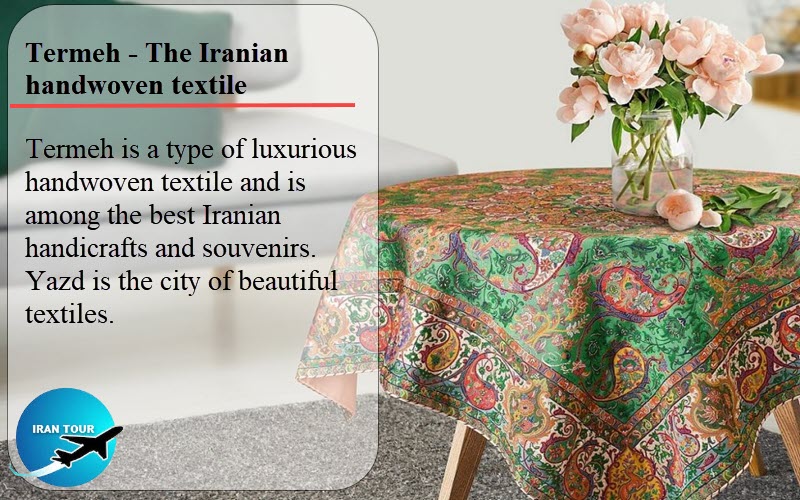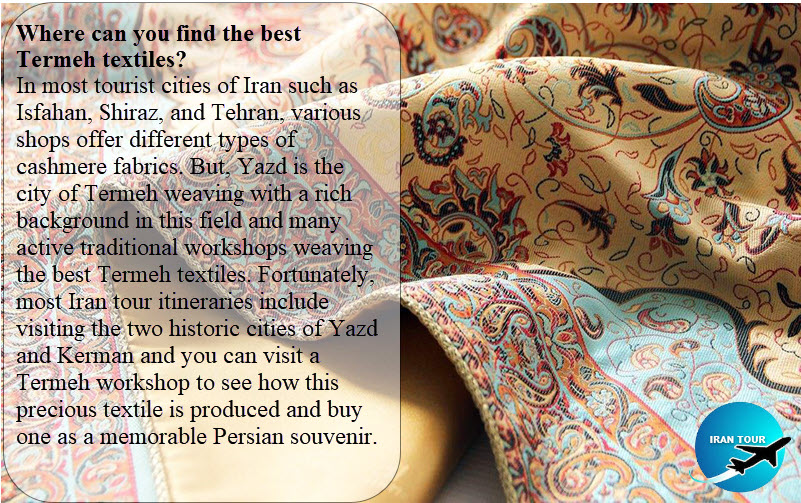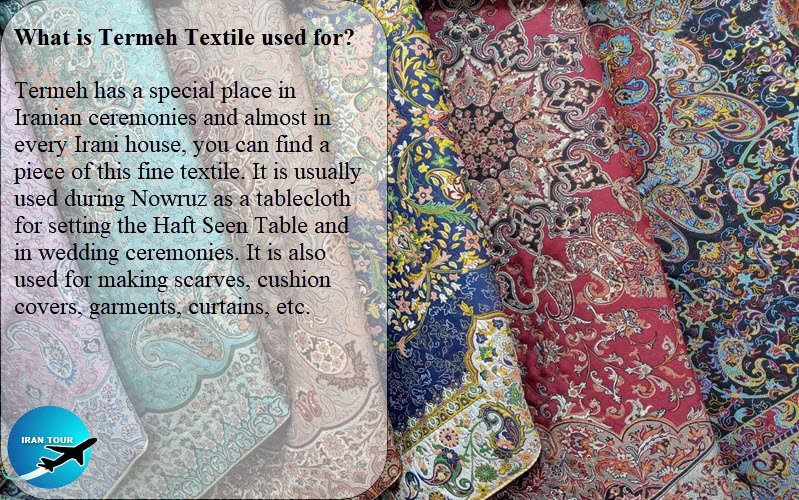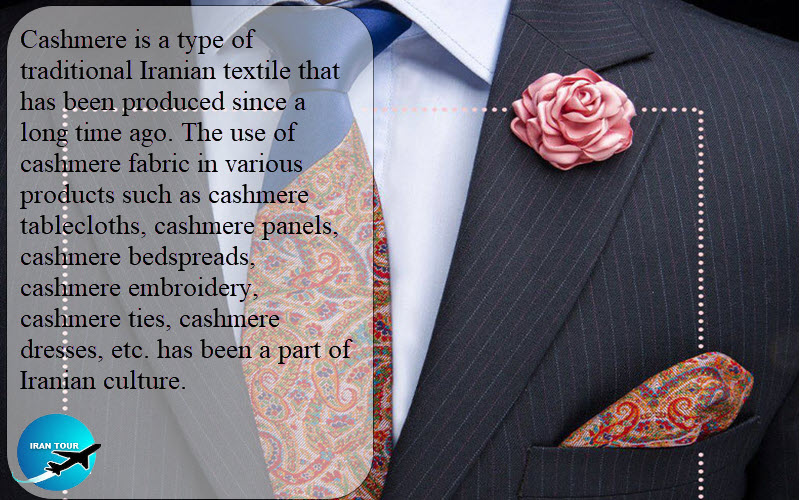Copyright 2020 - 2021 irantour.tours all right reserved
Designed by Behsazanhost
Kashmir an artistic masterpiece of Yazd artists
Kashmir an artistic masterpiece of Yazd artists
Termeh Original Iranian Art
The irresistible attractions of the colorful country of Iran do not only include historical, touristic places, and religious monuments. Every corner of Iran has its own culture and customs which constitute Iranian harmony and uniqueness and can surprise all travelers. Cashmere cloth is one of the best handicrafts in Iran, which is a huge complicated complex of pattern, design, and culture, which is not only the most famous souvenir of Yazd but also one of the symbols of this historical city.
 |
Termeh is a precious Iranian fabric with very soft fibers. Termeh is available in different colors and patterns; however, most people are familiar with paisley patterns. As you know, Termeh is produced in many cities, while Yazd Termeh is very famous and this fame is for its unique quality which distinguishes it from other Termeh. Termeh is usually made of wool, fur, or silk. Termeh is made in various designs. If you look at the reverse side of the Termeh fabric, you will see that the reverse side of the fabric is dense and loose, but the reverse side of the fabric is completely smooth and even. Experts consider the Iranian cypress as the root of paisley. The Cypress is one of the special symbols of the Zoroastrians. The cypress tree bows its head in humility before God in a paisley pattern. The paisley is also a symbol of fire in some sources. From the Zoroastrian point of view, fire is the inner fire of man which purifies him from evils and is one of the three basic principles of Zoroastrians, namely: good thoughts, good words, and good deeds. Additionally, because fire is associated with light, it is also a symbol of intellect, wisdom, mysticism, and wisdom.
 |
Another theory for the curved head of the cypress in the paisley pattern is that in Mazdakian times, the cypress was considered a sign of freedom. After defeating Mazdak, Cypress lowered her head in embarrassment. Textiles are among the main goods traded along the Silk Road. As you know, the Silk Road crosses the central desert and the city of Yazd is located on the same route, so the Termeh trade has boomed there. There is much disagreement about the origin of Termeh. Some scholars believe that Termeh originated in Iran, but others believe that Termeh was first made in Kashmir and later in Iran. The history of Termeh before 900 AH is unknown.
 |
Termeh, like other traditional fabrics, has no exact history. What is known about the history and antiquity of Termeh dates back to the Safavid period, which is obtained from the information on a text of an ancient inscription in Dehliz. The people of Yazd have been weaving Termeh fabrics for centuries. The inscription in the Dehliz of the Great Mosque of Yazd is a document that proves this. In the past, many Zoroastrians lived in the city of Yazd. After the arrival of Islam in Iran, some of them migrated to India to work in Termeh weaving. The migration of Iranian weavers from Termeh to India brought about great changes and a boom in the weaving industry of Termeh in India. Paisley pattern, which is one of the famous Termeh patterns, did not exist in Kashmir before Termeh exploded there, and it was Iranian artists who introduced this beautiful traditional pattern to another country by migrating. The people of Kerman used to weave Termeh fabrics before carpet weaving. Many of the beautiful designs and patterns of Kerman rugs are taken from the designs of Termeh scarves. The booming Termeh headscarf and weaving industry and its many fans have driven about two-thirds of Karman residents to choose this industry to earn money and earn a living. In the past, Termeh was woven by hand and it was called finger weaving, and weaving a small piece of this fabric required a lot of time and energy.
 |
However, Termeh weaving has become easier over time, and with the development of textile machinery for Termeh weaving, now Termeh weaving is dying out and only a few workshops in Tehran, Kerman, Kashan, and Yazd do Termeh weave. Fath Ali Shah ordered the establishment of workshops for weaving Kashmiri scarves, as Kashmiri scarves were rare early in his reign and difficult to access. Terms weaving exploded thanks to Amir Kabir. Termeh at that time was used to design prayer book covers and was called Termeh cover. The people of Yazd appreciate Termeh. The people of Yazd place the Termeh cloth in the dowry of their daughters and regard it as a kind of financial support. Additionally, during Muharram mourning days, the flags of Yazd mourning processions are decorated with Termeh fabrics. Termeh fabrics remain on the flags until the end of Imam Hussein's mourning days
- Details
- Category: Yazd Tourism